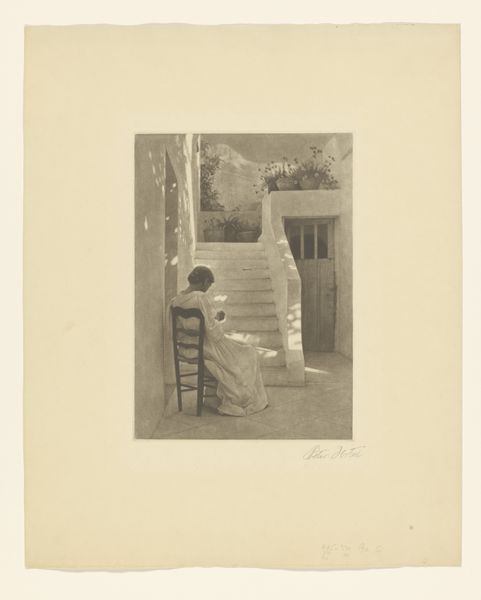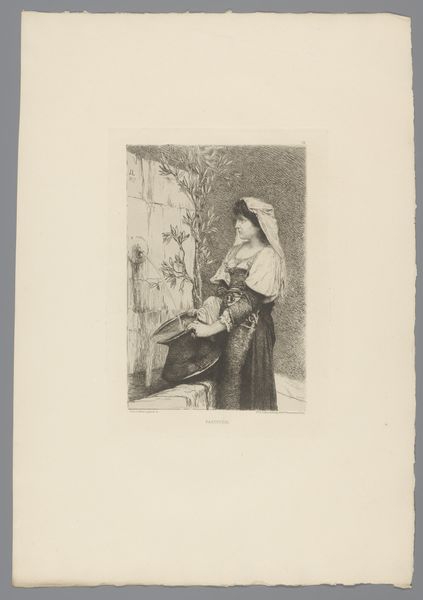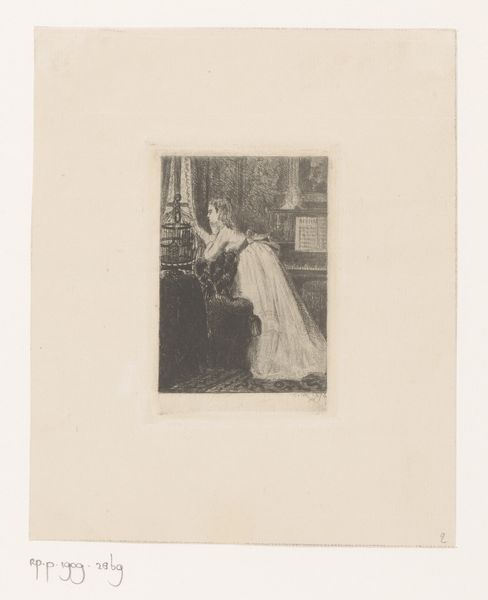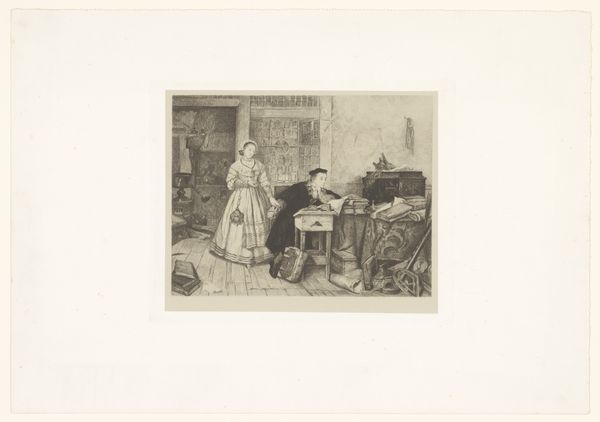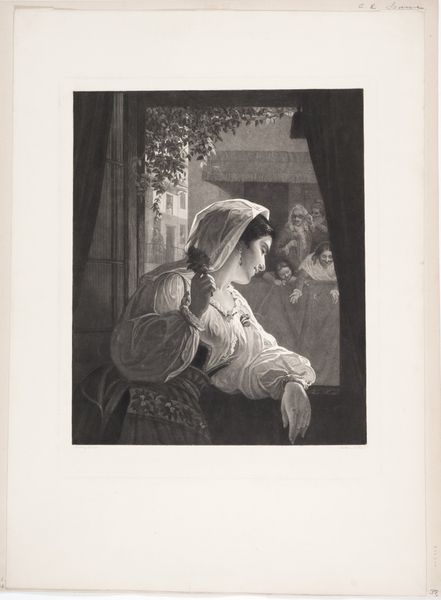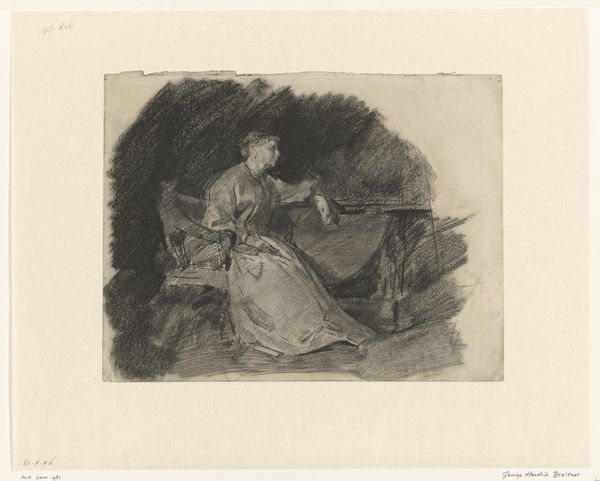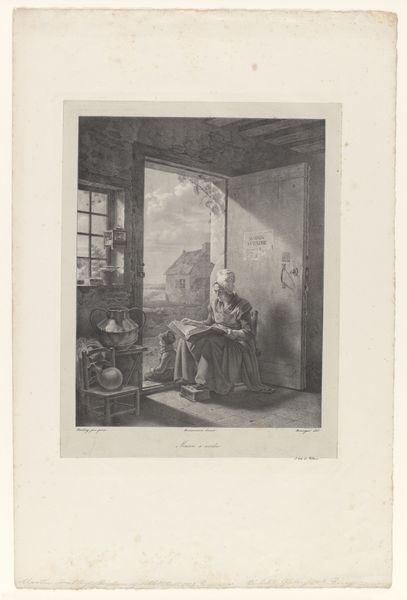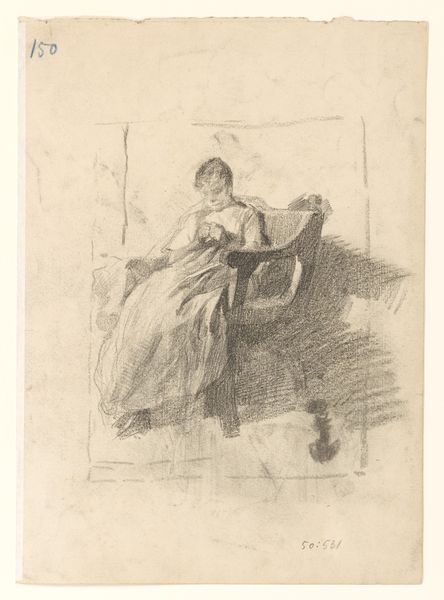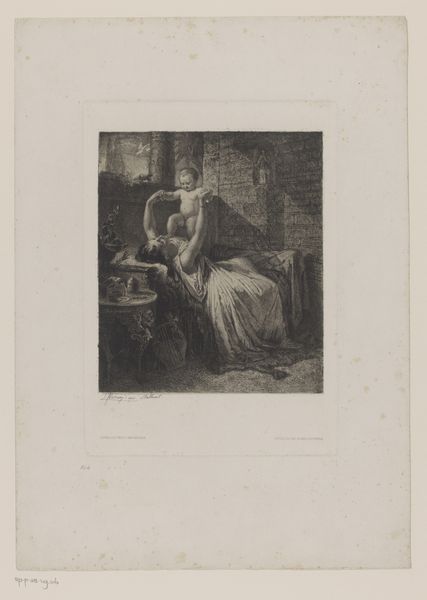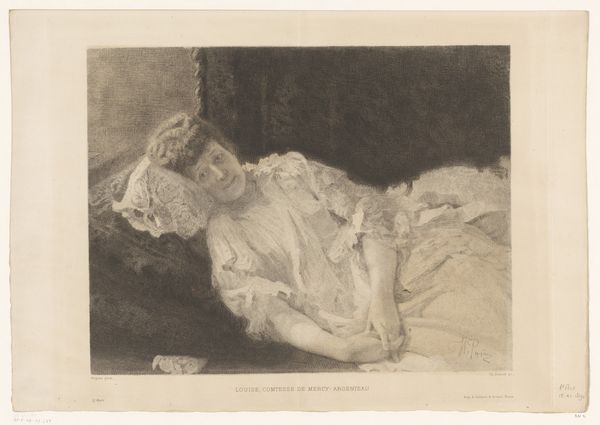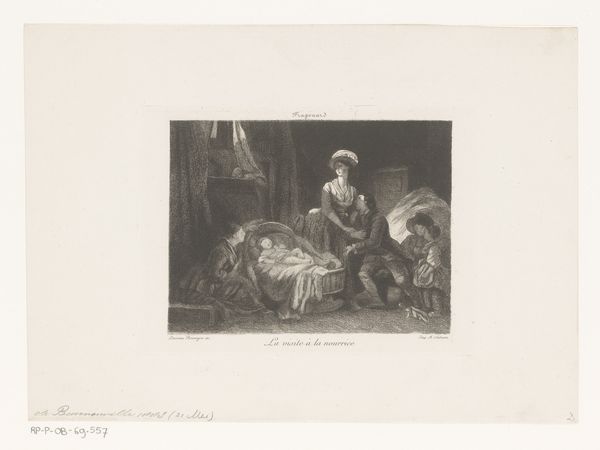
drawing, print, etching
#
portrait
#
drawing
# print
#
impressionism
#
etching
#
landscape
#
genre-painting
Dimensions: height 175 mm, width 230 mm
Copyright: Rijks Museum: Open Domain
This etching, by Ferdinand Oldewelt, shows a young woman embroidering near an open window. The printmaking process itself would have begun with a prepared metal plate, likely copper or zinc. The artist would then have drawn an image onto it with a sharp needle, exposing the metal. After this, the plate would be submerged in acid, which bites into the lines. The deeper the lines, the more ink they hold. The social significance of this artwork lies in the depiction of leisure and domesticity. Embroidery was a common pastime for women of the middle and upper classes, representing a form of refined labor. However, it's important to remember that the creation of textiles was also a major industry, often relying on the exploited labor of women and children. The contrast between the lady's leisurely embroidery and the vast textile industry highlights the social and economic disparities of the time. Considering the materials, processes, and social context is essential for a full understanding of the artwork, which challenges traditional distinctions between fine art and craft.
Comments
No comments
Be the first to comment and join the conversation on the ultimate creative platform.
